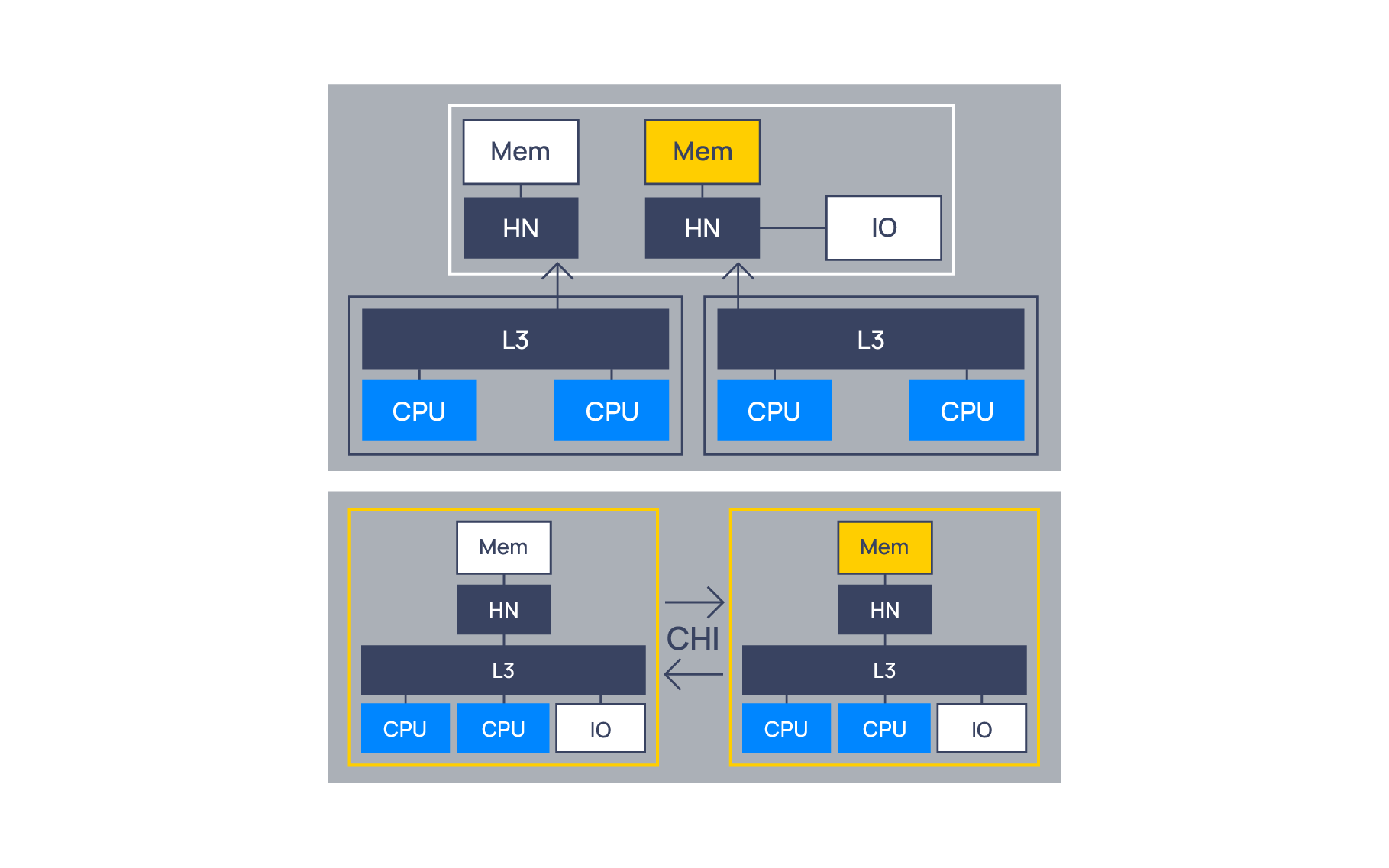 Baya Systems started with a vision to enable semiconductor system design to efficiently transition to the chiplet era and match the exponentially increasing demands for efficient data movement in intelligent computing (the tight integration of different compute elements such as CPUs, GPUs and accelerators that enable the diverse computational requirements of AI) spotlights Nandan Nayampally, CCO, Baya Systems while in a Volt-Full interview with Niloy Banerjee, The Volt Post. From designing a comprehensive suite of solutions to streamlining the development of advanced semiconductor systems, Nandan shares its vital vision behind developing the Chiplet Economy. Edited Excerpts Below.
Baya Systems started with a vision to enable semiconductor system design to efficiently transition to the chiplet era and match the exponentially increasing demands for efficient data movement in intelligent computing (the tight integration of different compute elements such as CPUs, GPUs and accelerators that enable the diverse computational requirements of AI) spotlights Nandan Nayampally, CCO, Baya Systems while in a Volt-Full interview with Niloy Banerjee, The Volt Post. From designing a comprehensive suite of solutions to streamlining the development of advanced semiconductor systems, Nandan shares its vital vision behind developing the Chiplet Economy. Edited Excerpts Below.
About Baya’s software-driven IP technology portfolio and at large kindly highlight on Baya’s key solution and offerings?
Baya Systems started with a vision to enable semiconductor system design to efficiently transition to the chiplet era and match the exponentially increasing demands for efficient data movement in intelligent compute (the tight integration of different compute elements such as CPUs, GPUs and accelerators that enable the diverse computational requirements of AI).
We offer a comprehensive suite of solutions designed to streamline the development of advanced semiconductor systems.
Our WeaverPro™ software platform that facilitates architectural exploration and analysis, enabling designers to configure, partition optimize, and design systems efficiently – an increasingly complex task with the transition to larger scale chiplet-based systems.
Our WeaveIP™ portfolio is built on a unique transport that is architected for efficiency and allows for creation of unified fabric solutions that are optimized for minimum power and silicon footprint while delivering unprecedented performance, latency and other key performance indicators (KPI).
The combination allows for rapid design, implementation and deployment of modular scalable, chiplet-ready systems that deliver on KPI targets from concept to field deployment, with post-silicon tuning and enhancement for future-proofing.
Baya Systems is also looking at radically new ways the Network on Chip (NoC) can solve some traditional problems. Something we will be unveiling soon.
Tell us about Baya Systems’ vision behind developing Chiplet Economy?
With the confluence of exponentially greater demand for performance, limitations in traditional semiconductor design as well the limitations of Dennard scaling, chiplets are emerging as a solution to go beyond existing computing limitations.
Baya Systems envisions a transformative shift in semiconductor design, moving from traditional system-on-chip (SoC) architectures to a modular “system-of-chips” approach. This strategy addresses the escalating demands of AI and other data-intensive applications by enabling scalable performance, optimized power efficiency, and reduced costs.
Our software-driven IP technology portfolio is designed to accelerate both complex single-die SoC and multi-die system designs, simplifying development processes and reducing risks.
By embracing the chiplet economy, we aim to empower designers to rapidly analyze, develop, optimize, and deploy complex systems, which will unlock unprecedented scale for large-scale compute and AI processing.
Though there is a helm towards chiplet-based multi-die systems where chiplets can enable multiple benefits for vendors but the key challenge is to create large, complex, chiplet-based designs. What are Baya Systems’ strategies in the coming time to at par with innovations?
Emerging technologies like AI are pushing the industry forward and requiring more complex designs that take advantage of chiplets. AI requires multiple compute elements, from traditional CPUs, GPUs and specialized NPUs or accelerators working on a highly optimized orchestration through very capable, high-bandwidth fabric.
The nature of AI, and in particular, Generative AI, and multi-modal compute is the need for highly scalable systems and for that, modularity is critical.
The notion of a “tile” that can be at the granule of a self-contained compute subsystem that can be scaled by putting down many instances is how the industry can meet the consistently growing demand while addressing the Time to Market (TTM) needs.
Baya’s platform is designed exactly for the purpose of highly efficient tiling, with a physically-aware design platform that allows for rapid and localized customization.
As designs scale into multi-die systems, Baya’s software allows for a top down analysis of complex multi-cluster systems that allows for clarity and the right level of partitioning to optimize designs.
Clearly interoperability at C2C and D2D level becomes critical and Baya operates at D2D protocol level. We are also partnering with chiplet PHY providers and EDA vendors to help them optimize for both interoperability and optimization.
Scalable systems are the way of the future and we’re thinking of everything within those systems, from understanding what the workloads are to the best possible ways to solve them.
How to focus on performance and physical design requirements of any single-die SoC and chiplet-based multi-die system?
Designing large-scale chiplet-based systems presents a range of challenges in delivering seamless data movement, maintaining low-latency communication, and managing memory and cache coherency efficiently across multiple clusters or dies.
Traditional architectures often struggle with these complexities, leading to increased design risks, inefficiencies and longer implementation cycles. We offer a holistic approach that combines advanced system IP with powerful software tools.
Our WeaverPro software provides a data-driven platform that enables designers to architect cache and memory architecture followed by algorithmically optimized unified fabric design from concept to post-silicon tuning, accelerating the development and correct-by-construction deployment of a chiplet-ready system architecture that is globally and locally optimized, all throughout to the target Key Performance Indicators (KPIs)
The WeaveIP fabric is designed from the ground up for chiplet-readiness, with the network being able to isolate namespace and congestion, while also incorporating configurable multi-level coherency capability that simplifies or optimizes multi-chiplet coherent systems. The combined software platform allows high-level partitioning and chiplet-ready system design.
The WeaveIP portfolio is based on a unique transport architecture that allows for multiple protocols to overlay on the same wires and logic, thereby optimizing both standard and custom protocol transactions over a unified fabric.
This allows designers to maximize performance while reducing footprint and energy. We have seen designs that can be optimized down from our own efficient standard mesh baseline, improving performance by 20%, while reducing area and power by 25+%. These numbers will be better versus existing market offerings. We expect to improve this over time
The fabric is very configurable and topology-agnostic, allowing very complex and intricate designs to be optimally created, and the modular, physically-aware design approach enables much easier and quicker implementation of these systems, while also allowing for localized changes, radically speeding up sign-off.
With the same software platform allowing for post-silicon tuning, this gives the customer future-proofing and in-field customization.
How Baya aims to solve the growing tussle with high-performance design in fields such artificial intelligence, automobiles, and data centers?
Technologies that have growing data needs, like AI, automotive and data centers, demand architectures capable of handling high-bandwidth, parallel data movement with low-latency communication. Baya’s solutions are designed to meet these requirements by supporting scalable chiplet-based designs.
In AI, the demand for rapid data processing and parallel processing is paramount. Our WeaveIP™ fabric delivers customizable protocols and multicast capabilities, ensuring that AI accelerators can handle high throughput and scale efficiently, even for many-chiplet systems and into the petabyte range.
For the automotive sector, especially with advanced ADAS, cockpit electronics, and autonomous driving systems, seamless integration of various coherent and non-coherent systems is crucial. Our technology provides a unified fabric that facilitates this high-level integration, delivering both efficiency and performance.
In data centers, the focus is on managing large-scale coherent CPU computations for hyperscale and enterprise computing. Our solutions deliver extensive data throughput at low latency, delivering consistent performance and ensuring Quality of Service (QoS) to meet the rigorous demands of hyperscale and enterprise computing environments.
With the right approach to design, high-performance computing doesn’t require compromising on efficiency, scalability, or performance. New, chiplet-based approaches make it possible for industries such as AI, automotive, and data centers to continue advancing for the foreseeable future.
Tenstorrent, which has licensed Baya technology for its AI and RISC-V chiplet solutions, hence how shall this strategic collaboration operate in the coming time?
Tenstorrent is one of the leaders in the next generation of advanced AI computation – both from the systems but also as a licensor of AI and RISC-V processor IP.
Tenstorrent has licensed our WeaveIP™ fabric to scale its AI and RISC-V chiplet solutions. Baya’s IP and software flow enables Tenstorrent and its partners to analyze, customize and deploy its intelligent compute platform for current and future workloads and deliver highly scalable chiplet solutions.
It enables Tenstorrent to plan at a detail level, including performance modeling, transport, quality of service and cache coherency. This data-driven, correct by construction fabric IP delivers the performance and scale needed for Tenstorrent’s chiplet-based solutions.
Working with a visionary lead partner, especially in AI, drives the requirements to the bleeding edge, which helps Baya to bring cutting-edge product to market.
Tenstorrrent’s reach also has raised visibility of both, the need for advanced new capabilities in fabric, and Baya as a leader in that space.




